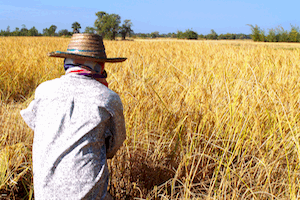Last updated April 12, 2019
 Farmers in the developing world are being helped by the old cell phone. Even in hard to reach places in developing countries, the humble old cell phone is still relatively ubiquitous – and that fact could be used to spread information that can help people to help themselves. A group from the University of Illinois in the United States has created a series of videos that shows how easily information can be sent via used cell phones. This will help those in developing nations to improve their lives in simple and achievable ways, one example being a video that teaches farmers how to create insecticide just by using seeds from a neem tree.
Farmers in the developing world are being helped by the old cell phone. Even in hard to reach places in developing countries, the humble old cell phone is still relatively ubiquitous – and that fact could be used to spread information that can help people to help themselves. A group from the University of Illinois in the United States has created a series of videos that shows how easily information can be sent via used cell phones. This will help those in developing nations to improve their lives in simple and achievable ways, one example being a video that teaches farmers how to create insecticide just by using seeds from a neem tree.
“There’s been a dramatic revolution in the way that we can share information,” notes Barry Pittendrigh from the University of Illinois. “And that’s come about both through the internet and through the dramatic increase in the use of cell phones, especially in developing countries.”
New and old cell phones are spreading like wildfire throughout the developing world, and the increasing sophistication of such devices is only a boon to enable the spread of information to those who need it the most. “We discovered that many farmers had cell phones that would play video clips,” says Jess Lowenberg-DeBoer, a crop scientist from Purdue University. “We thought, “Okay, can we use those cell phones as a way to communicate this visual information?”
“Getting the information across to them is a little difficult because some of them cannot read,” says the University of Illinois’ Tolulope Agunbiade. “But with the animations, it’s easy to get the information across to them.”